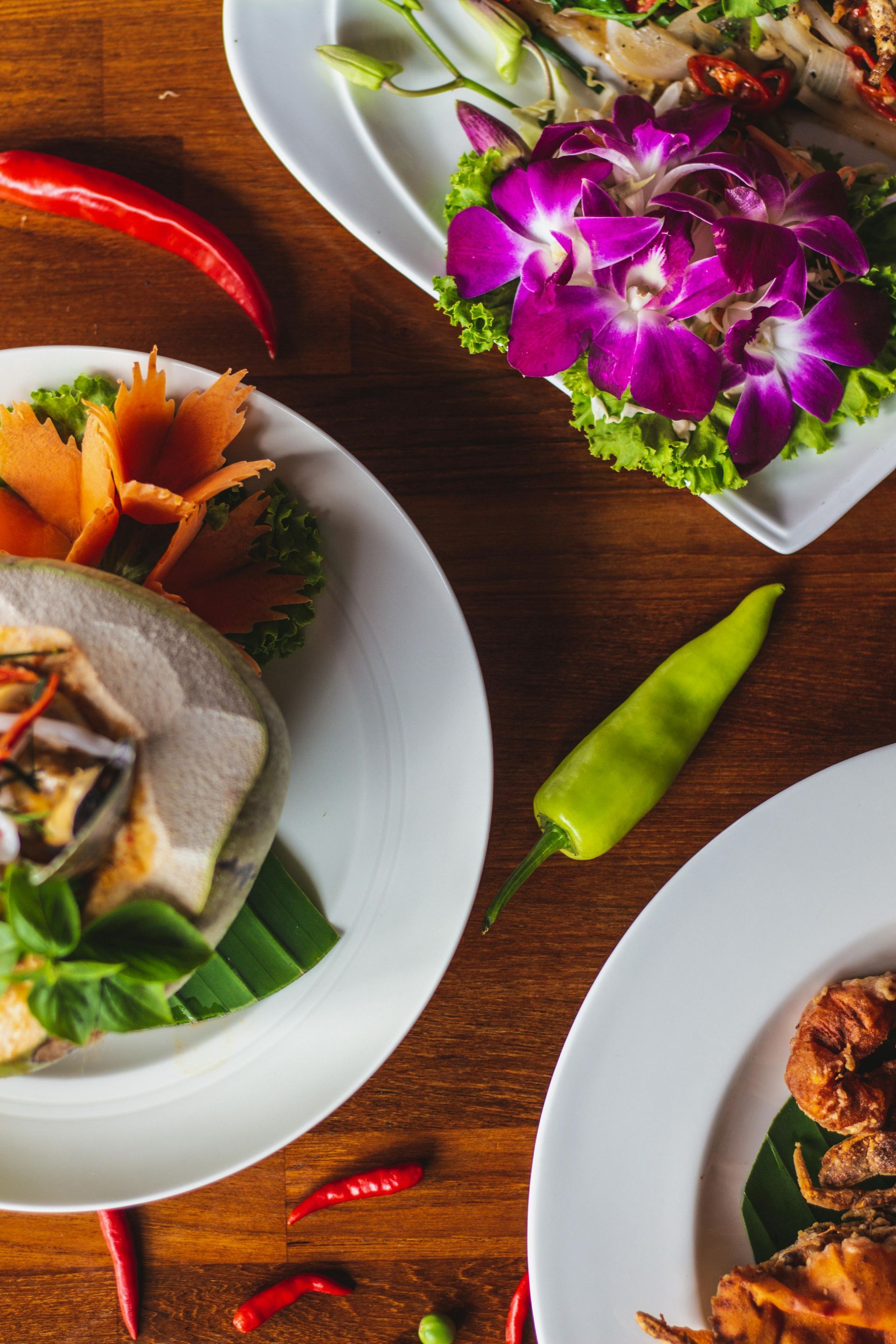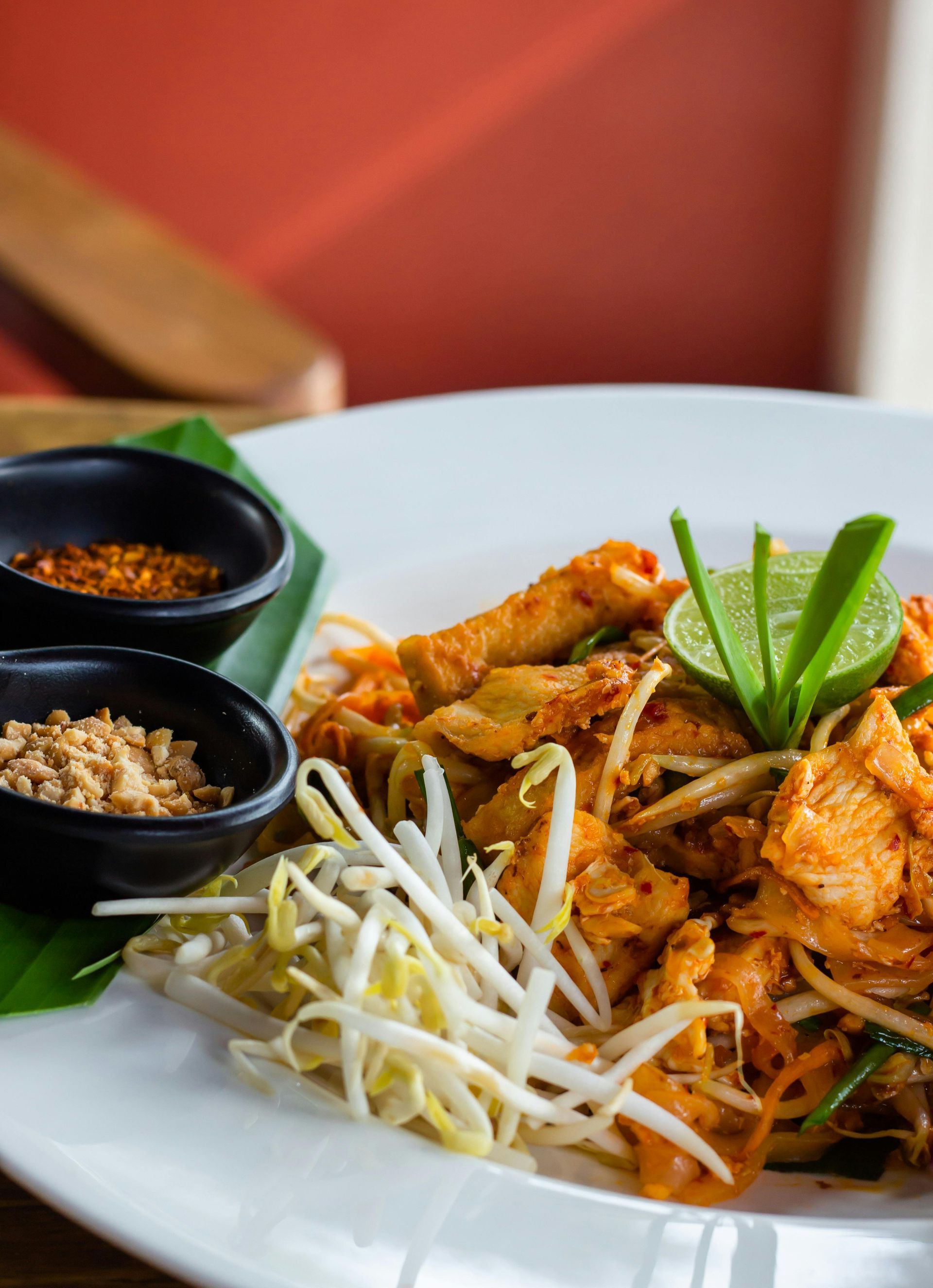How History, Culture, and Religion Shape Traditional Thai Cooking
Thai cuisine is a rich tapestry woven from centuries of historical, cultural, and religious influences. More than just food, Thai cooking represents the country’s vibrant past, its diverse cultural exchanges, and its deeply rooted spiritual beliefs. Every dish, from the simplest stir-fry to the most complex curry, carries a story of how history, culture, and religion have shaped Thai food into what it is today.
Historical Influences on Thai Cooking
The history of Thai cuisine is closely tied to the country’s position along major trade routes, which exposed it to an array of international flavors. As early as the 14th century, Thailand (formerly Siam) was a key hub in the Southeast Asian spice trade. Merchants from India, Persia, China, and even Portugal brought new ingredients, cooking techniques, and culinary traditions that would leave lasting marks on Thai food.
Indian and Persian spices like cumin, coriander, and cardamom influenced many Thai curries, including the famous Massaman Curry, which reflects the fusion of Thai and Muslim culinary practices. Indian influences also brought coconut milk into Thai cooking, now a cornerstone of many dishes, particularly in the southern regions of the country.
The Chinese made a significant impact on Thai food during the Ayutthaya Kingdom, introducing methods like stir-frying and deep-frying, as well as noodles, which led to the creation of dishes like Pad Thai and Pad See Ew. The use of the wok is a clear sign of Chinese influence, now a central tool in Thai kitchens.
European influence, especially from Portuguese traders, is evident in Thai desserts. For example, Foi Thong, a sweet made from egg yolks and sugar, is directly linked to Portuguese cooking, brought to Thailand in the 17th century.
Cultural Influences on Thai Cuisine
Thai culture places a strong emphasis on harmony and balance, and this is deeply reflected in its food. The four main tastes—spicy, salty, sweet, and sour—are central to Thai cooking. Thai meals are carefully crafted to offer a balance of these flavors, creating dishes that are rich, vibrant, and full of contrast.
Family and community are at the heart of Thai culture, and this is mirrored in how food is served. Meals are often shared family-style, with multiple dishes presented at once to be enjoyed together. This practice reflects the importance of social connection and togetherness in Thai life. Even in a restaurant, the idea of sharing a meal is common, as each dish is designed to complement the others on the table.
Thai food also honors
seasonality and locality. Traditional dishes often use ingredients that are available locally, reflecting Thailand’s agricultural heritage. Fresh herbs like
lemongrass, kaffir lime leaves, and Thai basil
are staples in most dishes, connecting the cuisine to the country’s fertile landscape.
Religious Influences on Thai Cooking
Religion, particularly Buddhism, plays a crucial role in shaping Thai food culture. The practice of Buddhism is not only about spirituality but also about mindfulness, balance, and respect for life, all of which are reflected in the way food is prepared and consumed.
Many Thai dishes strive for balance—whether it's the four primary flavors or the way ingredients are combined—mirroring the Buddhist philosophy of seeking harmony in life. Buddhist teachings also encourage mindful eating, appreciating food not just for its taste but also for its nourishment of both body and spirit.
Monks play a special role in Thai food culture. They traditionally receive alms in the form of food from local communities, creating a deep spiritual connection between cooking and giving. These offerings are often simple but wholesome, with great care taken to ensure that the food is fresh and prepared with respect. This practice reflects the Buddhist principle of merit-making, where giving food is considered an act of generosity and compassion.
Another important aspect of Buddhism’s influence is the relative lack of heavy meat consumption in traditional Thai cuisine. While modern Thai food includes more meat, many traditional dishes are either vegetarian or rely on fish and seafood as primary protein sources, reflecting the Buddhist value of minimizing harm to living beings.
In some regions, particularly the northeastern (Isaan) and northern regions, animist beliefs—an ancient spiritual tradition that predates Buddhism—still have a presence. These beliefs, which emphasize respect for nature and the spirits that inhabit it, often dictate the types of ingredients used in cooking. Certain foods are prepared during specific festivals or seasons to honor local spirits and ancestors.
The Legacy of Tradition in Thai Cooking
The historical, cultural, and religious influences on Thai cooking have created a cuisine that is both diverse and deeply connected to the Thai way of life. Every dish, whether it’s the spicy heat of a Southern Thai curry or the balanced sweetness of a Central Thai stir-fry, reflects a long-standing commitment to harmony, balance, and respect for tradition.
In Thai culture, food is more than sustenance—it’s a way to connect with others, honor spiritual beliefs, and preserve the rich history of the land. Whether enjoyed in the bustling markets of Bangkok or in a quiet Pottstown farmhouse, traditional Thai cooking carries with it centuries of stories, cultural practices, and religious principles that continue to shape the way Thai food is prepared and shared today.



